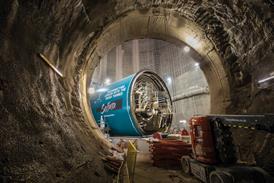All Data articles – Page 9
-
 Features
FeaturesLead times: January - March 2019
Lead times have remained static, but widespread reports of labour shortages mean firms are starting to predict increases soon
-
 Features
FeaturesTracker: March 2019
Overall activity slipped to its lowest point in almost three years, with contraction in every sector, while tenders continued to fall
-
 Features
FeaturesCost model: Mental health facilities
With mental ill health rising and models of care evolving, we need new facilities that fulfil modern mental healthcare requirements
-
 Features
FeaturesBuilding intelligence: Q4 2018
Output is slowing as the uncertainty around Brexit continues, especially in the commercial sector, but private and public housing are holding up well
-
 Features
FeaturesTracker: February 2019
Tenders and employment prospects both fell for the first time in almost two years, but activity is still rising, if more slowly
-
 Features
FeaturesDevelopment update: residential
Changes to the planning system are designed to accelerate housebuilding by bringing new entrants into the market
-
 Features
FeaturesTracker: January 2019
Activity and new orders are losing momentum overall although the non-residential sector is holding up well
-
 Features
FeaturesCost model: Life sciences buildings
Research methods in the life sciences are developing at an unprecedented rate, so how can our buildings keep up with these developments?
-
 Features
FeaturesMarket forecast Q4 2018: Losing confidence
Tender prices in the year to Q4 kept climbing in the wake of rising building costs, as construction output rebounded in Q3 – but new orders dropped
-
 Features
FeaturesLead times: October - December 2018
The past quarter has again shown little movement, however, growing uncertainty over Brexit means this steadiness could soon change
-
 Features
FeaturesTracker: December 2018
Total activity continued to strengthen, with R M showing a big recovery after last month’s fall. Orders rose in all sectors if more slowly in civils, while housing led the rise in tender enquiries
-
 Features
FeaturesMini cost model: The evolution of retail
Despite reports of the death of the retail centre, the truth is that owners, developers and local authorities are adapting to use their spaces and assets in new and diverse ways
-
 Features
FeaturesBuilding intelligence: Q3 2018
Construction output is rising, driven largely by housing, both public and private, but public work is slipping – and the offices market is likely to be hit hardest by Brexit
-
 Features
FeaturesTracker: November 2018
Total activity continued to rise steadily but without accelerating, while orders and tender enquiries lost some growth momentum but remained buoyant. Experian Economics reports
-
 Features
FeaturesCost update Q3 2018
A quarterly analysis of changes to the main construction cost indices, material prices and labour costs shows continuing upward movement
-
 Features
FeaturesTracker: October 2018
Civil engineering activity built further on its September gains after four months of decline, while non‑residental was the only sector in which activity failed to grow last month
-
 Features
FeaturesMarket forecast: Past the peak
The initial market reaction to the Brexit vote was muted, with output soon recovering strongly, but the trend seems likely to have turned, just as our exit from the EU is imminent. Michael Hubbard of Aecom reports
-
 Features
FeaturesTracker: September 2018
Civil engineering activity finally returned to growth in September, after four months of contraction, while the other sectors stayed steady
-
 Features
FeaturesThe future of offices
Values in the workplace are changing, which in turn means that what occupiers want from an office building is also evolving rapidly
-
 Features
FeaturesLead times: July-September 2018
With workload and enquiries remaining level, lead times stayed steady for all except two packages – both were driven higher by pressure on design and manufacturing resources




















